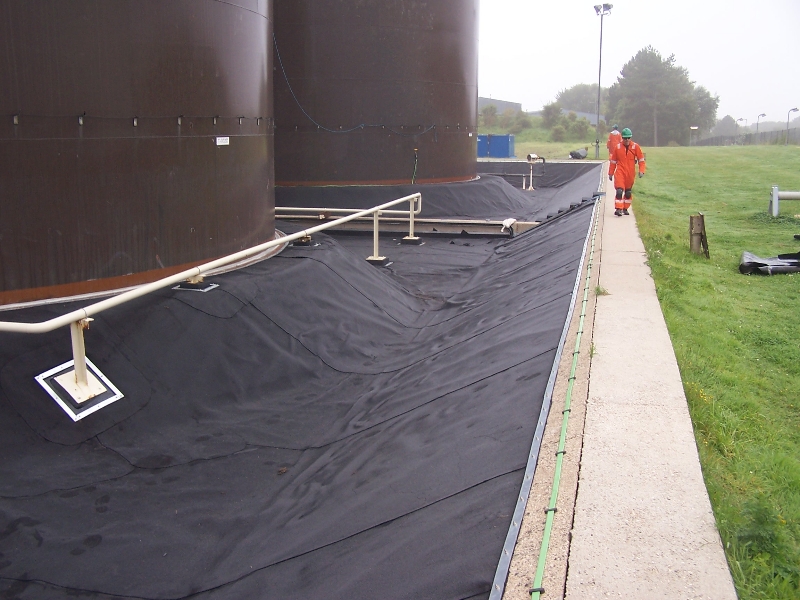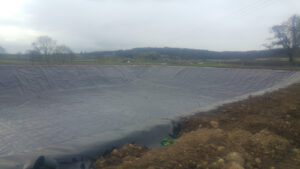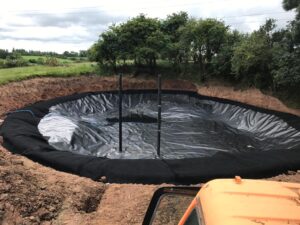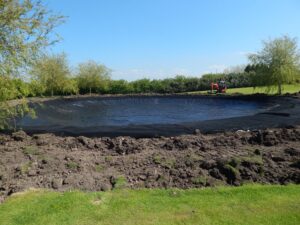Biogas reactors stand as pillars of innovation, transforming organic waste into valuable energy sources. Geosynthetic liners play a crucial role in optimising the efficiency and durability of these reactors.
Understanding Biogas Reactor Tanks
Biogas reactors are containers where organic materials, such as agricultural waste, food scraps, or animal manure, undergo anaerobic digestion to produce biogas—a renewable energy source composed primarily of methane and carbon dioxide. These reactors provide an environment conducive to the growth of microorganisms that break down organic matter, producing biogas as a by-product.
Role of Geosynthetic Liners
Geosynthetic liners, typically made of materials like high-density polyethylene (HDPE), polypropylene (PP), or ethylene propylene diene monomer (EPDM), serve as impermeable barriers within biogas reactor tanks. Their primary function is to contain the digester contents, including liquids and gases, preventing any leakage or seepage into the surrounding environment.
Benefits of Geosynthetic Liners in Biogas Reactors
Gas Retention: Geosynthetic liners ensure efficient gas retention within the reactor, optimising the biogas production process. By containing the gases produced during anaerobic digestion, these liners facilitate the collection and extraction of biogas for energy generation.
Leakage Prevention: The impermeable nature of geosynthetic liners prevents the escape of biogas and effluent materials, reducing the risk of environmental contamination. This containment capability is crucial for safeguarding soil and groundwater from potential pollutants.
Enhanced Durability: Geosynthetic liners are designed to withstand harsh chemical environments and physical stress. Their resilience against corrosive substances and abrasion ensures the longevity and structural integrity of biogas reactor tanks.
Ease of Installation and Maintenance: These liners are relatively easy to install and maintain, allowing for cost-effective and efficient management of biogas reactor systems. Routine inspections can identify any wear or damage, enabling prompt repairs to sustain optimal functionality.
Optimising Biogas Production
Geosynthetic liners contribute significantly to maximising the efficiency and productivity of biogas reactors. Their role in containing gases and liquids creates a controlled environment favourable for the microbial breakdown of organic matter, ultimately yielding increased biogas output.
Environmental and Economic Impact
By incorporating geosynthetic liners, biogas reactor systems promote environmental sustainability by harnessing renewable energy from organic waste while minimising the risk of environmental pollution. Additionally, the utilisation of biogas as an energy source reduces reliance on fossil fuels, contributing to a more sustainable and eco-friendly energy landscape.
Conclusion
Geosynthetic liners serve as indispensable components within biogas reactor tanks, ensuring containment, efficiency, and durability in the production of renewable energy. Their implementation not only enhances the functionality of biogas systems but also aligns with the pursuit of sustainable energy solutions. As the world embraces renewable energy alternatives, geosynthetic liners play a pivotal role in advancing the viability and impact of biogas technology on a global scale.
To find out more about our products and services and how we can help you, please contact us using the below –
Tel: 01695 228626
Email: enquiries@enviroseal.co.uk





